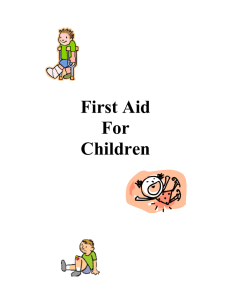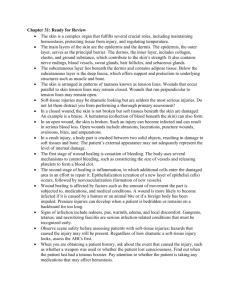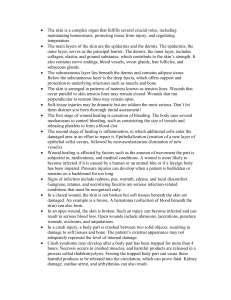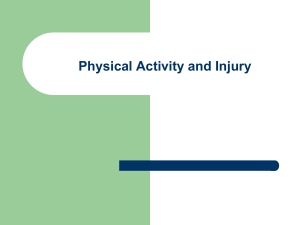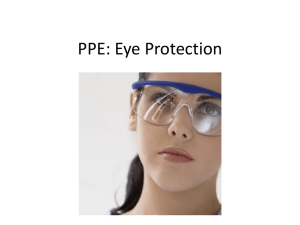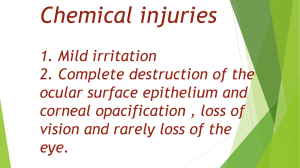Chapter 24: Soft-Tissue Injuries
advertisement
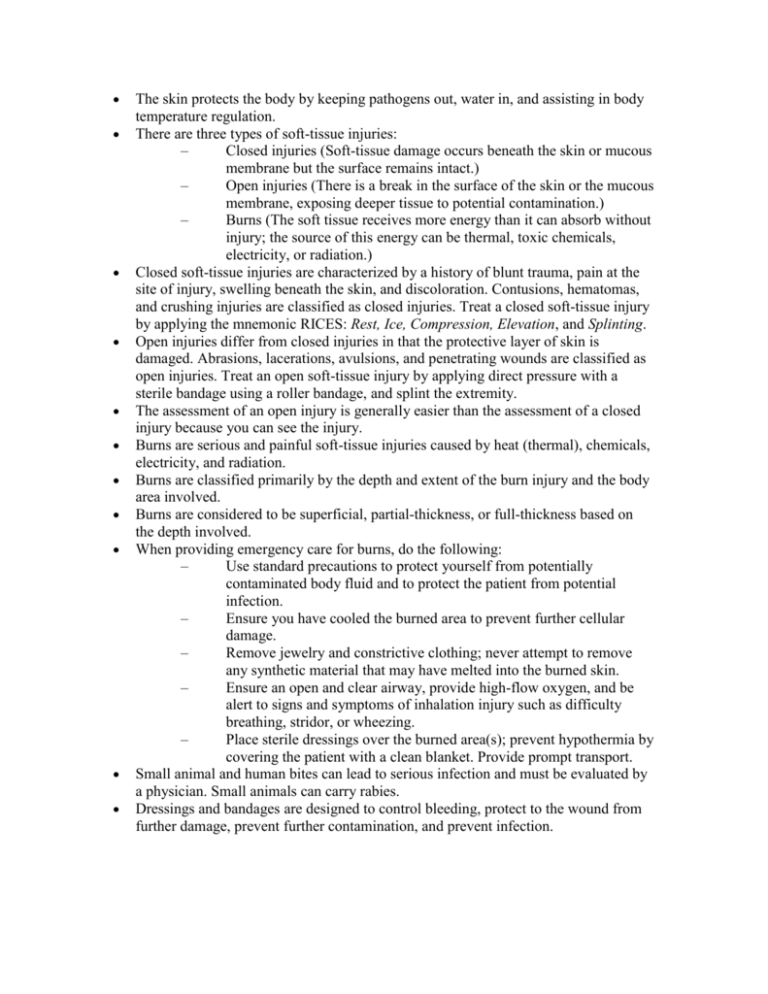
The skin protects the body by keeping pathogens out, water in, and assisting in body temperature regulation. There are three types of soft-tissue injuries: – Closed injuries (Soft-tissue damage occurs beneath the skin or mucous membrane but the surface remains intact.) – Open injuries (There is a break in the surface of the skin or the mucous membrane, exposing deeper tissue to potential contamination.) – Burns (The soft tissue receives more energy than it can absorb without injury; the source of this energy can be thermal, toxic chemicals, electricity, or radiation.) Closed soft-tissue injuries are characterized by a history of blunt trauma, pain at the site of injury, swelling beneath the skin, and discoloration. Contusions, hematomas, and crushing injuries are classified as closed injuries. Treat a closed soft-tissue injury by applying the mnemonic RICES: Rest, Ice, Compression, Elevation, and Splinting. Open injuries differ from closed injuries in that the protective layer of skin is damaged. Abrasions, lacerations, avulsions, and penetrating wounds are classified as open injuries. Treat an open soft-tissue injury by applying direct pressure with a sterile bandage using a roller bandage, and splint the extremity. The assessment of an open injury is generally easier than the assessment of a closed injury because you can see the injury. Burns are serious and painful soft-tissue injuries caused by heat (thermal), chemicals, electricity, and radiation. Burns are classified primarily by the depth and extent of the burn injury and the body area involved. Burns are considered to be superficial, partial-thickness, or full-thickness based on the depth involved. When providing emergency care for burns, do the following: – Use standard precautions to protect yourself from potentially contaminated body fluid and to protect the patient from potential infection. – Ensure you have cooled the burned area to prevent further cellular damage. – Remove jewelry and constrictive clothing; never attempt to remove any synthetic material that may have melted into the burned skin. – Ensure an open and clear airway, provide high-flow oxygen, and be alert to signs and symptoms of inhalation injury such as difficulty breathing, stridor, or wheezing. – Place sterile dressings over the burned area(s); prevent hypothermia by covering the patient with a clean blanket. Provide prompt transport. Small animal and human bites can lead to serious infection and must be evaluated by a physician. Small animals can carry rabies. Dressings and bandages are designed to control bleeding, protect to the wound from further damage, prevent further contamination, and prevent infection.
